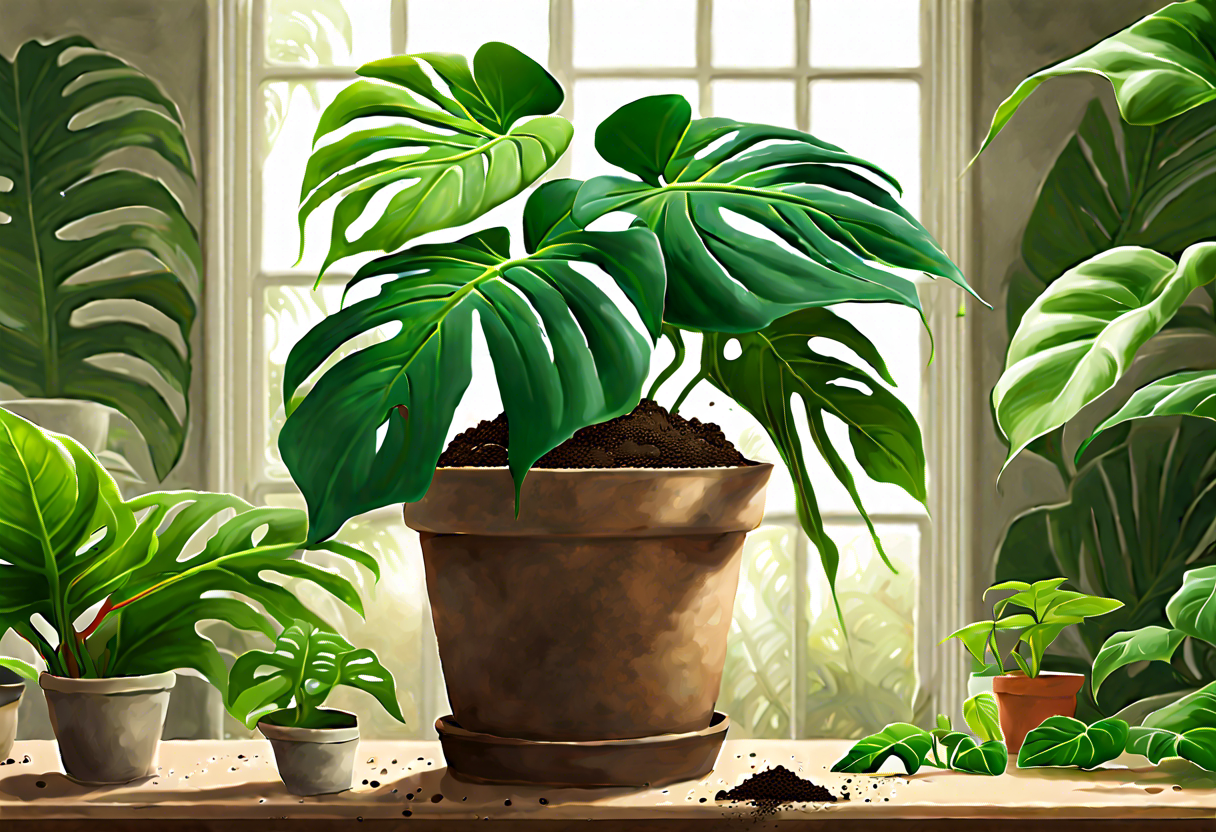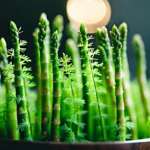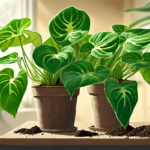Benefits of Using High-Quality Soil or Potting Mix for Philodendron
Philodendrons are popular houseplants known for their lush green foliage and easy maintenance. To ensure optimal growth and health, it is essential to provide them with the best soil or potting mix. Using a high-quality soil or potting mix offers numerous benefits for your philodendron plants.
1. Improved Drainage: High-quality soil or potting mix for philodendron usually consists of well-draining materials such as perlite or vermiculite. These components help prevent waterlogging, allowing excess water to escape and preventing root rot. Proper drainage ensures that the roots receive enough oxygen, promoting healthy growth.
2. Enhanced Nutrient Availability: The right soil or potting mix contains a balanced blend of organic matter, minerals, and nutrients needed for philodendron plants’ optimal growth. It provides a steady supply of essential nutrients, promoting vibrant foliage, strong roots, and overall plant vitality.
3. Optimal Moisture Retention: A high-quality soil or potting mix strikes the perfect balance between moisture retention and drainage. It holds enough moisture to keep the roots hydrated without becoming saturated. Maintaining optimal moisture levels ensures the philodendron plants’ healthy growth without the risk of root rot.
4. Reduced Risk of Pests and Diseases: Using a quality potting mix significantly reduces the risk of pest infestations and plant diseases. Inferior soil or potting mix may contain pathogens or pests that can harm your philodendron plants. High-quality mixes are carefully sterilized, ensuring a clean and pest-free environment for your plants to thrive.
5. Easy and Convenient Plant Care: High-quality soil or potting mix saves you time and effort in plant care. It eliminates the need for frequent watering and fertilizing as it retains moisture and provides a steady supply of nutrients. This makes maintaining your philodendrons much more manageable, especially for busy individuals.
6. Promotes Strong Root Development: A good soil or potting mix encourages robust root development in philodendron plants. The right blend of organic matter and minerals creates a loose, well-aerated environment, allowing roots to spread and absorb nutrients efficiently. Strong root systems support healthy growth and make your philodendron more resilient to environmental stressors.
7. Long-term Plant Health: Investing in high-quality soil or potting mix contributes to the long-term health and longevity of your philodendron plants. It provides a stable foundation for growth, ensuring your plants remain vigorous and vibrant for years to come.
Remember, when selecting a soil or potting mix for your philodendrons, prioritize high-quality options that offer excellent drainage, nutrient availability, and moisture retention. By using the best soil or potting mix, you can create an optimal growing environment for your philodendron plants, fostering their growth and enhancing their natural beauty.
Types of Soil or Potting Mix Suitable for Philodendron
When it comes to caring for your Philodendron, choosing the right soil or potting mix is crucial. The right soil will provide the necessary nutrients, drainage, and aeration for your plant to thrive. With so many options available, it can be overwhelming to know which one is best. Here are some of the different types of soil or potting mix that are suitable for Philodendron:
1. Peat-based Soil Mix
One of the most common types of soil or potting mix for Philodendron is a peat-based mix. Peat moss retains moisture well and provides good drainage, which is important for preventing root rot. It also has a slightly acidic pH level, which is ideal for Philodendron plants.
To create a peat-based soil mix, combine equal parts peat moss, perlite, and vermiculite. This will ensure the perfect balance of moisture retention and drainage.
2. Orchid Potting Mix
Philodendron plants can also thrive in an orchid potting mix. This type of mix is usually composed of bark, sphagnum moss, and perlite. Orchid potting mix is known for its excellent drainage and aeration properties, which are essential for healthy root growth.
An orchid potting mix provides an open structure that allows air to reach the roots, preventing them from becoming waterlogged. This is especially beneficial if you tend to overwater your plants.
3. Cactus or Succulent Mix
If you prefer a more fast-draining soil mix, a cactus or succulent mix can work well for your Philodendron. This type of mix is typically a blend of potting soil, sand, and perlite or pumice. It offers excellent drainage and aeration, helping to prevent the roots from sitting in water.
A cactus or succulent mix is ideal if you live in a humid environment or tend to water your plants frequently. It allows excess moisture to drain away, minimizing the risk of root rot.
4. DIY Mix
If you prefer to make your own soil or potting mix, you can do so by combining different organic materials. A popular DIY mix for Philodendron includes equal parts peat moss, perlite, and compost. This mix provides good moisture retention and drainage while enriching the soil with nutrients.
Adding some orchid bark or charcoal to the mix can further enhance its drainage properties. However, it’s important to note that homemade mixes may require additional supplementation with fertilizers or amendments to provide the optimal balance of nutrients.
When selecting a soil or potting mix for your Philodendron, ensure that it is well-draining, retains moisture, and contains the necessary nutrients. Consider the specific needs of your Philodendron variety and the environmental conditions in which it will be grown. By choosing the right soil or potting mix, you’ll provide a healthy foundation for your Philodendron to flourish.
Choosing the Best Soil or Potting Mix for Philodendron: What to Look For
When it comes to cultivating healthy and thriving Philodendron plants, one of the most crucial factors to consider is the soil or potting mix you use. The right soil composition can provide your Philodendron with essential nutrients, proper drainage, and the ideal environment for root development. To ensure the best growing conditions for your Philodendron, here are a few key ingredients to look for when selecting the best soil or potting mix.
-
Well-Draining Materials: Philodendrons prefer moist soil but are prone to root rot if exposed to excessive moisture. Therefore, it is vital to choose a potting mix that provides adequate drainage. Look for soil or mixtures that incorporate materials like perlite, pumice, or coarse sand. These ingredients help create air pockets within the soil, allowing excess water to drain away from the roots and preventing waterlogged conditions that can harm your plant.
-
Organic Matter: Organic matter plays a crucial role in soil fertility and moisture retention. Look for potting mixes that contain organic materials such as compost, peat moss, or coco coir. These ingredients not only provide essential nutrients but also help retain moisture, ensuring that your Philodendron has access to proper hydration. Organic matter also promotes beneficial microbial activity in the soil, supporting healthy root development and overall plant growth.
-
Good Aeration: Adequate soil aeration is essential for the health of Philodendron roots. Oxygen is necessary for root respiration and nutrient uptake. Look for potting mixes that have a light and airy texture. This can be achieved by incorporating ingredients like vermiculite or well-aged bark. These materials create air pockets within the soil, promoting oxygen circulation and preventing compaction.
-
pH Balance: Philodendrons thrive in slightly acidic to neutral soil with a pH range of 5.5 to 7. To ensure the optimal pH balance for your plant, consider using a potting mix specifically formulated for acid-loving plants. You can also test the pH of your soil using a testing kit and make necessary adjustments using amendments like lime or sulfur.
-
Slow-Release Fertilizers: While organic matter provides some nutrients, it’s important to supplement your Philodendron’s diet with additional fertilizers. Look for potting mixes that include slow-release fertilizers. Slow-release fertilizers provide a steady supply of nutrients over time, reducing the risk of nutrient imbalances or burn. Avoid high-concentration fertilizers, as these can easily damage your Philodendron’s sensitive roots.
By considering these key aspects when choosing the best soil or potting mix for your Philodendron, you can create an environment that promotes optimal growth and overall plant health. Remember to water your Philodendron appropriately, providing enough moisture without overwatering. Regularly monitor the condition of the soil and make adjustments as needed to maintain a healthy growing environment for your beloved Philodendron.
Make Your Own DIY Soil or Potting Mix for Philodendron
Soil or potting mix plays a crucial role in the growth and overall health of your philodendron plants. While there are plenty of commercial options available in the market, making your own DIY soil or potting mix can be a rewarding and cost-effective approach. By customizing the mix according to the specific needs of your philodendron, you can ensure optimal growth and a thriving plant. Here are some tips to help you create the best soil or potting mix for your philodendron plants.
-
Choose the Right Base: The base of your DIY potting mix should provide good drainage while holding enough moisture for the roots. A common base material is a combination of peat moss and perlite or vermiculite. Peat moss retains moisture and provides organic matter, while perlite or vermiculite promotes drainage to prevent waterlogged soil.
-
Incorporate Organic Matter: Adding organic matter to your potting mix enhances its texture, nutrient content, and water-holding capacity. You can include compost, well-rotted manure, or coconut coir as organic amendments. These materials also improve soil aeration and encourage beneficial microbial activity.
-
Include Nutrient-Rich Ingredients: Philodendrons thrive in well-nourished soil. nutrient-rich ingredients such as worm castings, composted poultry manure, or organic fertilizers can provide the necessary nutrients for healthy plant growth. Avoid using synthetic fertilizers, as they can cause salt buildup and harm your philodendron.
-
Ensure Proper Drainage: Adequate drainage is crucial to prevent waterlogging and root rot. Apart from adding perlite or vermiculite to the base mix, you can also consider adding coarse sand or pumice to enhance drainage. This will ensure that excess water can freely flow through the soil, keeping your philodendron’s roots healthy.
-
Maintain pH Balance: Philodendrons thrive in slightly acidic to neutral soil. Test the pH of your DIY potting mix using a soil testing kit, and adjust it if necessary. Most philodendrons prefer a pH range of 5.5 to 7.0. You can adjust the pH by adding lime to raise it or sulfur to lower it, depending on the initial pH level of your mix.
-
Consider Additional Amendments: Depending on your specific philodendron variety, you may need to add additional amendments to meet its requirements. For example, if you have a variety that prefers well-draining soil, you can add more perlite or sand. If your philodendron prefers a more moisture-retaining mix, you can add more peat moss or coconut coir.
-
Mix and Store: Once you have gathered all the necessary ingredients, thoroughly mix them in a clean container or bucket. Ensure that all the components are evenly distributed. You can store the DIY potting mix in airtight containers or sealed bags until you are ready to use it. This will help preserve the integrity of the mix and prevent any contaminants from entering.
By making your own DIY soil or potting mix for philodendrons, you have full control over the composition and quality of the medium that nourishes your plants. Remember to provide regular care and monitor the moisture levels of your philodendron to ensure optimal growth. With the right mix, your philodendron plants will flourish and bring a touch of green beauty to your indoor or outdoor space.
Common Mistakes to Avoid When Selecting Soil or Potting Mix for Philodendron
When it comes to keeping your Philodendron thriving and healthy, selecting the right soil or potting mix is crucial. The quality of the soil directly affects the plant’s growth, root development, and overall well-being. However, there are common mistakes that many Philodendron owners make when choosing soil or potting mix for their plants. By avoiding these mistakes, you can provide the best growing conditions for your Philodendron and ensure its long-term success.
1. Using heavy, compacted soil: Philodendrons require well-draining soil that allows excess water to flow through easily. Using heavy, compacted soil can lead to waterlogged roots, which can cause root rot and other diseases. Instead, opt for a lightweight, well-draining potting mix specifically formulated for indoor plants. This will provide the necessary aeration and moisture balance that your Philodendron needs.
2. Neglecting to check the pH of the soil: Philodendrons prefer slightly acidic soil with a pH range between 5.5 and 6.5. Before purchasing or using any potting mix, it’s essential to check its pH level. Avoid using soil with a pH that is too alkaline or acidic, as this can inhibit nutrient absorption and negatively impact your Philodendron’s health. Investing in a pH testing kit will help ensure the pH level is within the appropriate range.
3. Overlooking the importance of organic matter: Organic matter plays a vital role in soil fertility and structure. It provides essential nutrients, improves water retention, and promotes beneficial microbial activity. Using a potting mix that lacks organic matter can result in nutrient deficiencies and hinder the overall growth of your Philodendron. Look for potting mixes containing ingredients such as compost, peat moss, or coconut coir to enhance the organic content.
4. Not considering the specific needs of your Philodendron: Different Philodendron species have varying soil requirements. Some thrive in well-draining soil with good moisture retention, while others prefer a more porous mix. It’s important to research the specific soil preferences of your Philodendron species and choose a potting mix accordingly. Understanding and meeting your Philodendron’s specific needs will optimize its growth and prevent potential issues.
5. Choosing low-quality potting mix: While it may be tempting to opt for a cheaper potting mix, compromising on quality can have detrimental effects on your Philodendron. Low-quality potting mixes often lack essential nutrients, have poor moisture retention, and contain harmful chemicals. Investing in a high-quality potting mix specifically formulated for indoor tropical plants like Philodendrons is worth it in the long run, as it will provide the necessary nutrients and optimal growing conditions.
6. Failing to repot regularly: Over time, the potting mix can become depleted of nutrients and lose its structure, affecting your Philodendron’s growth. It is important to repot your Philodendron every 1-2 years to replenish the soil and provide fresh nutrients. When repotting, carefully remove the old soil, trim any rotting roots, and replace it with a fresh potting mix that meets your Philodendron’s specific requirements.
By avoiding these common mistakes, you can ensure that your Philodendron thrives in the best soil or potting mix. Remember to choose a well-draining mix with organic matter, consider your plant’s specific requirements, and invest in a high-quality potting mix. With the right soil, your Philodendron will flourish and bring beauty to your indoor space.
Conclusion
Using high-quality soil or potting mix for Philodendron can provide numerous benefits for the health and vitality of your plant. By choosing the right type of soil or potting mix and considering the essential ingredients, you can create an ideal environment for your Philodendron to thrive.
There are several different types of soil or potting mix that are suitable for Philodendron. These include peat-based mixes, which are great for retaining moisture, and well-draining mixes that prevent waterlogging. Coco peat-based mixes are also popular, as they are sustainable and provide good drainage. It is essential to consider the specific needs of your Philodendron and choose a mix that suits its requirements.
When selecting the best soil or potting mix for your Philodendron, there are certain ingredients you should look for. Organic matter, such as compost or leaf mold, helps to improve the overall structure and nutrient content of the soil. Perlite or vermiculite aids in drainage and aeration, preventing the soil from becoming compacted. Additionally, a balanced blend of essential plant nutrients, such as nitrogen, phosphorus, and potassium, ensures the healthy growth of your Philodendron.
If you prefer to make your own DIY soil or potting mix for Philodendron, there are a few tips to keep in mind. Start with a base of high-quality potting soil and add organic matter, such as compost or well-rotted manure, to improve the nutrient content. Incorporate perlite or vermiculite to enhance drainage and aeration. You can also consider adding small amounts of sand or bark for additional structure. Experiment with different ratios and ingredients until you find the perfect blend for your Philodendron.
While selecting soil or potting mix for Philodendron, it is crucial to avoid common mistakes that can harm your plant. Avoid using heavy garden soil or clay-based mixes that can lead to poor drainage and root rot. Overwatering is another common mistake to avoid, as it can lead to waterlogging and fungal diseases. It is also important to keep in mind the specific requirements of your Philodendron species and choose a mix that suits its needs.
By taking the time to understand the benefits of using high-quality soil or potting mix for Philodendron, exploring the different types of suitable mixes, considering essential ingredients, and following tips for making your own mix, you can provide your plant with the optimal conditions for growth. Avoiding common mistakes will further ensure the health and longevity of your Philodendron. With the right soil or potting mix, your Philodendron will flourish and bring beauty to your indoor or outdoor space for years to come.


